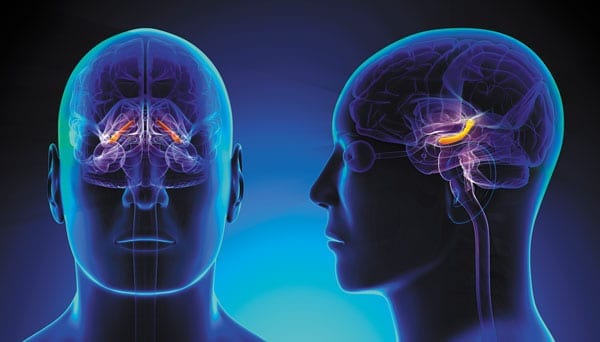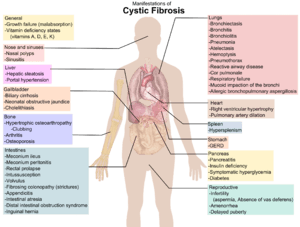
New research in The FASEB Journal suggests that these lab-grown cells express a broad array of natural and potent protective agents providing preservation and protection against injury, toxins and diseases
A group of really brainy scientists have moved closer to growing “therapeutic” brain cells in the laboratory that can be re-integrated back into patients’ brains to treat a wide range of neurological conditions. According to new research published online in The FASEB Journal, brain cells from a small biopsy can be used to grow large numbers of new personalized cells that are not only “healthy,” but also possess powerful attributes to preserve and protect the brain from future injury, toxins and diseases. Scientists are hopeful that ultimately these cells could be transformed in the laboratory to yield specific cell types needed for a particular treatment, or to cross the “blood-brain barrier” by expressing specific therapeutic agents that are released directly into the brain.
“This work is an example of how integrating basic science and clinical care may reveal privileged opportunities for biomedical research,” said Matthew O. Hebb, M.D., Ph.D., FRCSC, a researcher involved in the work from the Departments of Clinical Neurological Sciences (Neurosurgery), Oncology and Otolaryngology at the University of Western Ontario in Ontario, Canada. “It is our hope that the results of this study provide a footing for further advancement of personalized, cell-based treatments for currently incurable and devastating neurological disorders.”
Scientists enrolled patients with Parkinson’s disease who were scheduled to have deep brain stimulation (DBS) surgery, a commonly used procedure that involves placing electrodes into the brain. Before the electrodes were implanted, small biopsies were removed near the surface of the brain and multiplied in culture to generate millions of patient-specific cells that were then subjected to genetic analysis. These cells were complex in their make-up, but exhibited regeneration and characteristics of a fundamental class of brain cells, called glia. They expressed a broad array of natural and potent protective agents, called neurotrophic factors.
“From an extremely small amount of brain tissue, we will one day be able to do very big things,” said Gerald Weissmann, M.D., Editor-in-Chief of The FASEB Journal. “For centuries, treating the brain effectively and safely has been elusive. This advance opens the doors to not only new therapies for a myriad of brain diseases, but new ways of delivering therapies as well.”
The Latest Bing News on:
Brain disease therapies
- How Is Lyme Disease Treated?on April 27, 2024 at 10:00 am
Lyme disease is a bacterial illness spread by deer ticks. Antibiotics are the primary Lyme disease treatment, but home remedies can help.
- PET brain scans could reveal hidden inflammation in patients with multiple sclerosison April 27, 2024 at 4:47 am
A Brigham and Women’s Hospital study of 30 people found that, in patients with MS, advanced brain imaging could identify hidden inflammation not picked up on traditional MRIs ...
- Challenging Old Theories: Innovative Microscopy Exposes New Alzheimer’s Treatment Pathwayson April 27, 2024 at 3:35 am
Researchers at UC San Diego have utilized advanced imaging techniques to explore the metabolic processes behind Alzheimer's disease, leading to potential new strategies for treatment. Alzheimer's ...
- AI helps researchers uncover gut-brain interactions in Alzheimer'son April 26, 2024 at 10:00 am
AI technology reveals more information about the gut-brain health link in Alzheimer's, suggesting new pathways for research around treatments.
- Potential new treatment path for lasting Lyme disease symptomson April 26, 2024 at 8:26 am
Researchers have identified a potential new treatment for persistent neurological symptoms of Lyme disease, commonly seen even after antibiotic use. The study found that fibroblast growth factor ...
- Definitive Therapy to the Primary Site Improves Survival in Brain-Only Metastatic NSCLCon April 26, 2024 at 7:01 am
Definitive treatment to the primary site improves overall and cancer-specific survival among patients with brain-only NSCLC metastases, a recent retrospective study shows.
- Nanomaterial that mimics proteins could be basis for new neurodegenerative disease treatmentson April 25, 2024 at 9:25 am
Nrf2 combats this toxic stress in brain cells, helping to stave off disease. Jeffrey Johnson ... that increasing Nrf2's activity could form the basis of an Alzheimer's treatment, scientists have found ...
- Dementia Newson April 24, 2024 at 5:00 pm
Mar. 6, 2024 — A noninvasive treatment may help to counter ... a protein associated with Alzheimer's disease -- and subtle changes in brain microstructures on a type of MRI could lead to ...
- Genetic association study opens up new treatment avenues for Pick's disease, a rare form of early-onset dementiaon April 24, 2024 at 10:29 am
Pick's disease, a neurodegenerative disease of unknown genetic origin, is a rare type of frontotemporal dementia that affects people under the age of 65. The condition causes changes in personality, ...
- Early Data Indicate Cell Therapies Could ‘Reset the Clock’ in Parkinson’son April 21, 2024 at 9:03 pm
A one-time treatment for Parkinson’s disease could be a ‘market changer,’ experts told BioSpace, adding that cell therapies could limit the adverse effects seen with current drugs.
The Latest Google Headlines on:
Brain disease therapies
[google_news title=”” keyword=”Brain disease therapies” num_posts=”10″ blurb_length=”0″ show_thumb=”left”]
The Latest Bing News on:
Therapeutic brain cells
- Definitive Therapy to the Primary Site Improves Survival in Brain-Only Metastatic NSCLCon April 26, 2024 at 7:01 am
Definitive treatment to the primary site improves overall and cancer-specific survival among patients with brain-only NSCLC metastases, a recent retrospective study shows.
- New Therapy Destroys Deadly Brain Tumor in Dayson April 25, 2024 at 6:30 am
A groundbreaking new therapy destroys deadly brain tumors within days. The new treatment, CAR T-cell therapy, helps treat glioblastoma.
- Regeneration Biomedical doses first patient in phase I trial of stem cell therapy to deliver directly to brain of Alzheimer’s disease patientson April 25, 2024 at 1:31 am
Newport Beach, California Thursday, April 25, 2024, 14:00 Hrs [IST] ...
- ASO Therapy Repairs Neurons from Timothy Syndrome Patientson April 24, 2024 at 5:00 pm
Stanford University researchers developed an ASO therapy that corrects a splicing ... in which human stem cell-derived cortical organoids were implanted and integrated into the rat brain. These ...
- The murky, unregulated world of anti-ageing stem cell therapyon April 24, 2024 at 10:50 am
Stem cells are the new focal point of the rich and famous with Hollywood A-listers reportedly spending tens of thousands of pounds each year on expensive therapies offered by private longevity clinics ...
- Gene-based therapy restores cellular development and function in brain cells from people with Timothy syndromeon April 24, 2024 at 10:18 am
In a proof-of-concept study, researchers demonstrated the effectiveness of a potential new therapy for Timothy syndrome, an often life-threatening and rare genetic disorder that affects a wide range ...
- A genetic patch corrects a rare syndrome in human brain organoid grafted into a raton April 24, 2024 at 9:51 am
The team led by Sergiu Pasca, from Stanford University, wants to test this promising strategy in children with Timothy Syndrome, which is associated with autism and epilepsy ...
- Exploring Brain Cell Mapping via AI but without Coding Expertiseon April 22, 2024 at 1:30 pm
Scientists maintain that findings from using DELiVR have revealed potential therapeutic targets within brain regions.
- Early Data Indicate Cell Therapies Could ‘Reset the Clock’ in Parkinson’son April 21, 2024 at 9:03 pm
A one-time treatment for Parkinson’s disease could be a ‘market changer,’ experts told BioSpace, adding that cell therapies could limit the adverse effects seen with current drugs.
- Study reveals novel therapeutic target for traumatic brain injuryon April 19, 2024 at 10:34 am
Health outcomes vary greatly among the approximately 1.5 million Americans who survive a traumatic brain injury each year. Not only can these injuries cause loss of coordination, depression, ...
The Latest Google Headlines on:
Therapeutic brain cells
[google_news title=”” keyword=”therapeutic brain cells” num_posts=”10″ blurb_length=”0″ show_thumb=”left”]










